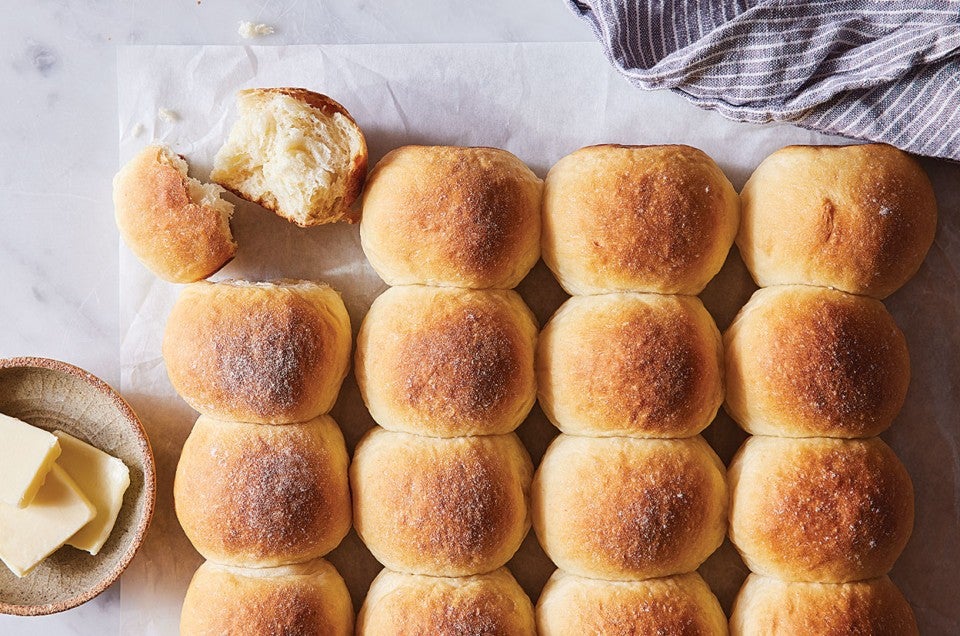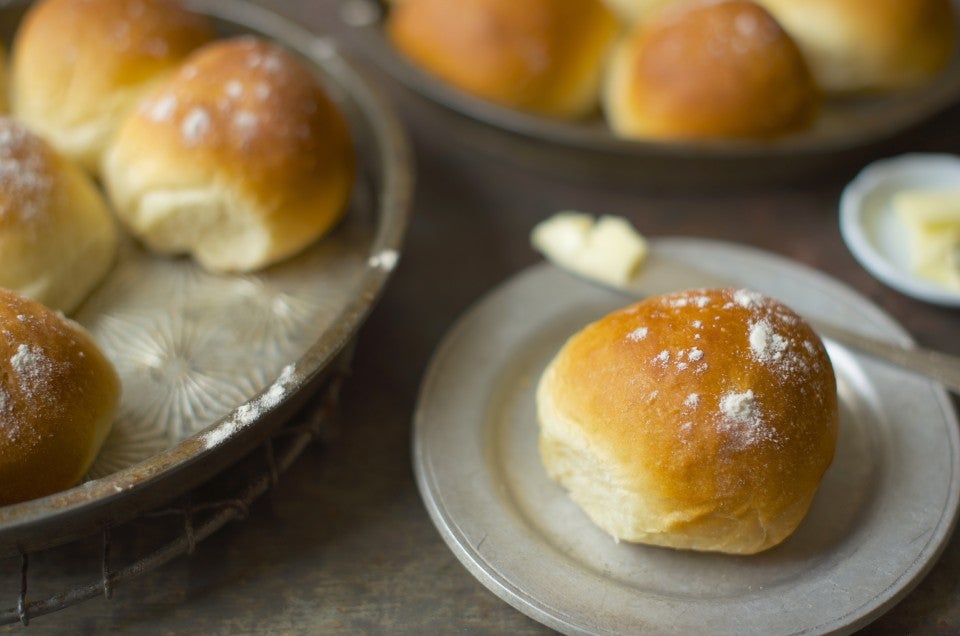Soft White Dinner Rolls
Homemade dinner rolls are SO much tastier than store-bought! These are a lovely addition to your breadbasket, and make great sandwiches, as well.

Homemade dinner rolls are SO much tastier than store-bought! These are a lovely addition to your breadbasket, and make great sandwiches, as well.





Weigh your flour; or measure it by gently spooning it into a cup, then sweeping off any excess. Combine the all of the ingredients and mix and knead — by hand, mixer or bread machine set on the dough cycle — until you've made a smooth dough. If you're kneading in a stand mixer, it should take 5 to 7 minutes at second speed, and the dough should barely clean the sides of the bowl, perhaps sticking a bit at the bottom. In a bread machine (or by hand), it should form a smooth ball.
Place the dough in a lightly greased bowl. Cover the bowl, and allow the dough to rise, at room temperature, until it's nearly doubled in bulk, about 1 hour. Rising may take longer, especially if you've kneaded by hand. Give it enough time to become quite puffy.
While the dough is rising, lightly grease two 9" round cake pans, or a 9" x 13" pan.
Gently deflate the dough, and transfer it to a lightly greased work surface. Divide it into 16 pieces.
Shape each piece into a rough ball by pulling the dough into a very small knot at the bottom, then rolling it under the palm of your hand into a smooth ball.

Place eight rolls in each of the round cake pans (or all 16 rolls in the 9" x 13" pan), spacing them evenly; they won't touch one another.
Cover the pan(s) with lightly greased plastic wrap, and allow the rolls to rise till they're very puffy, and have reached out and touched one another, about 1 hour. While the rolls are rising, preheat the oven to 350°F.
Bake the rolls until they're a deep golden brown on top, and lighter on the sides, about 25 minutes.
Remove the rolls from the oven, and after 2 or 3 minutes, carefully transfer them to a rack. They'll be hot and delicate, so be careful. Serve warm, or at room temperature.

View our privacy policy

